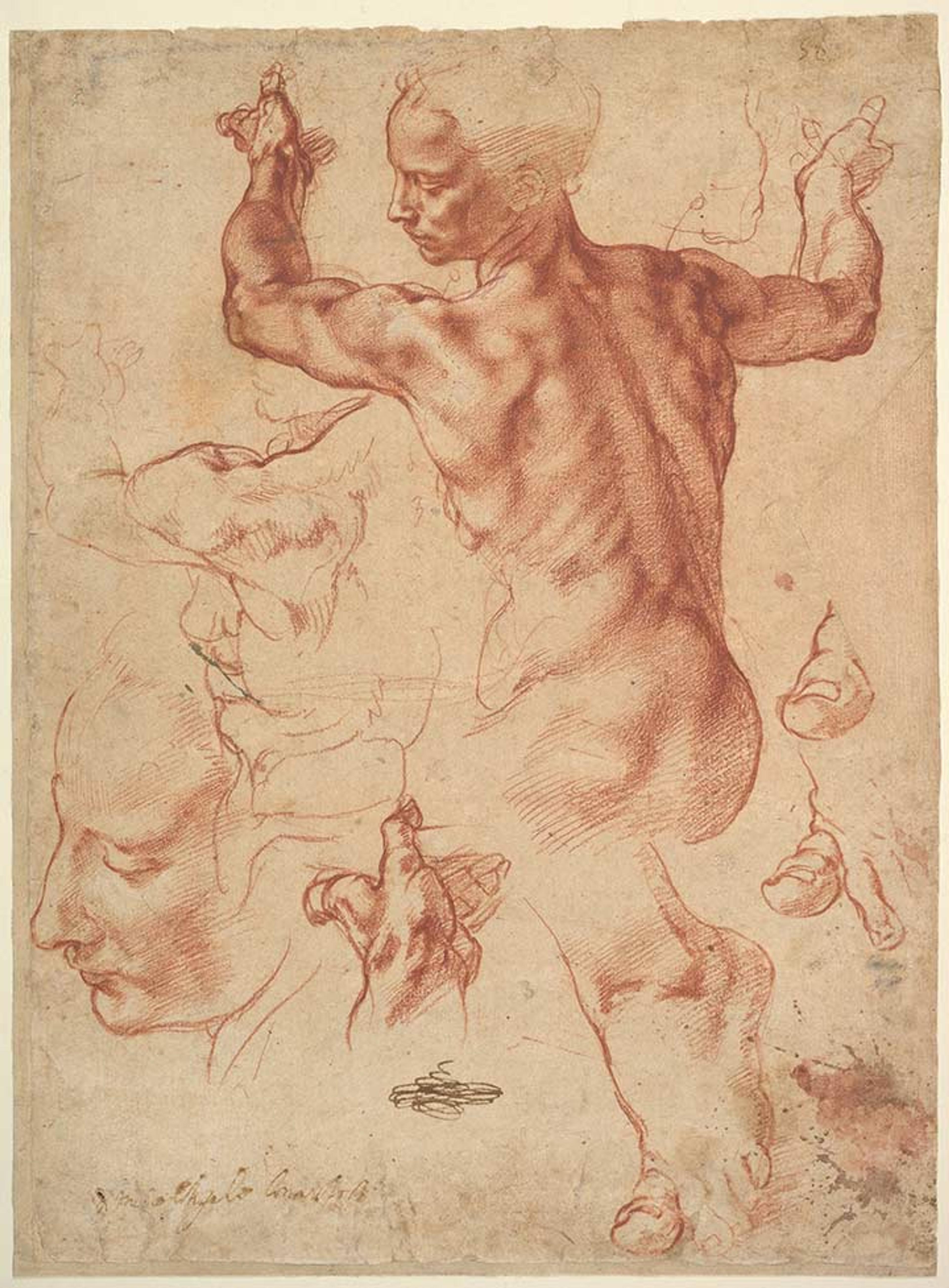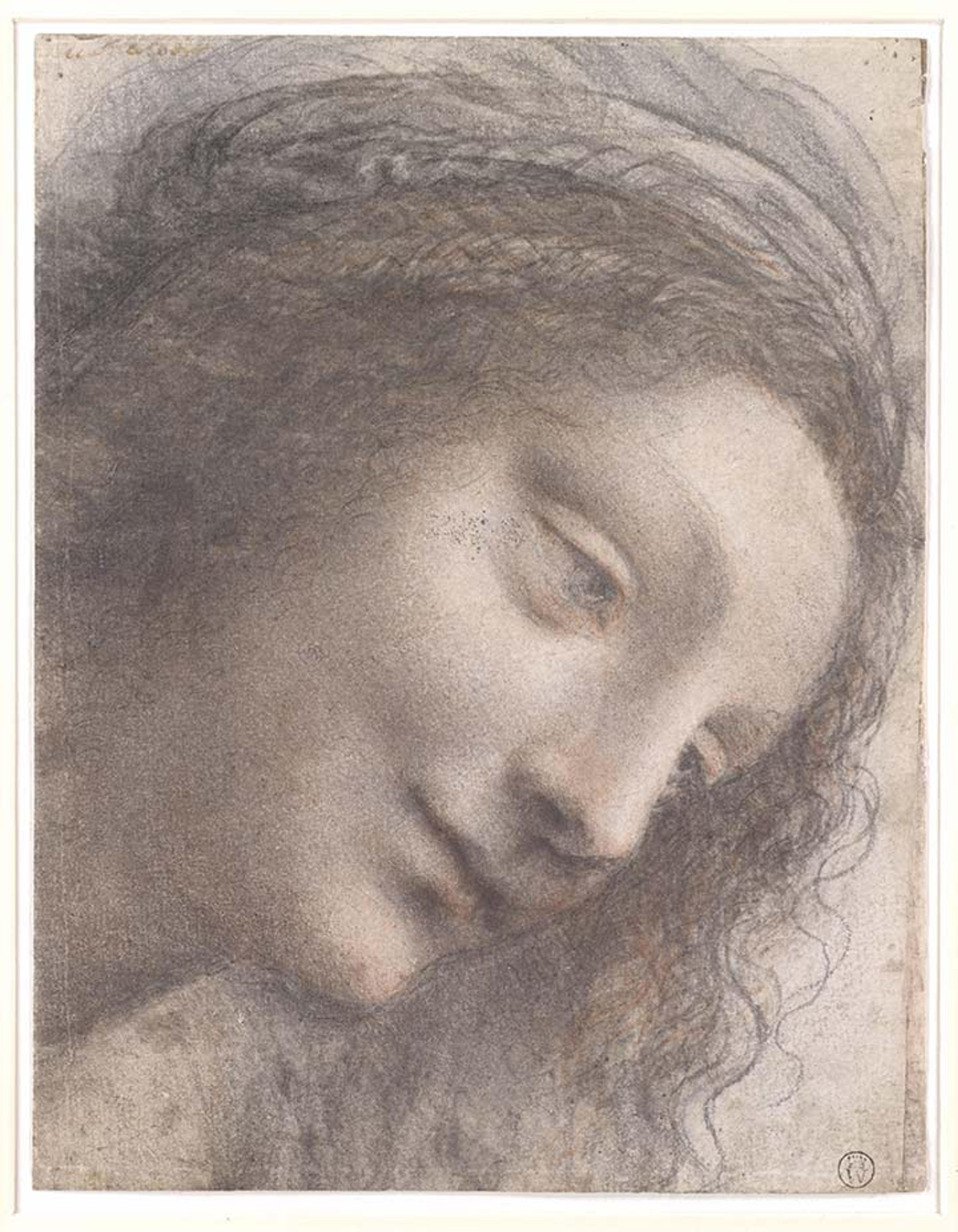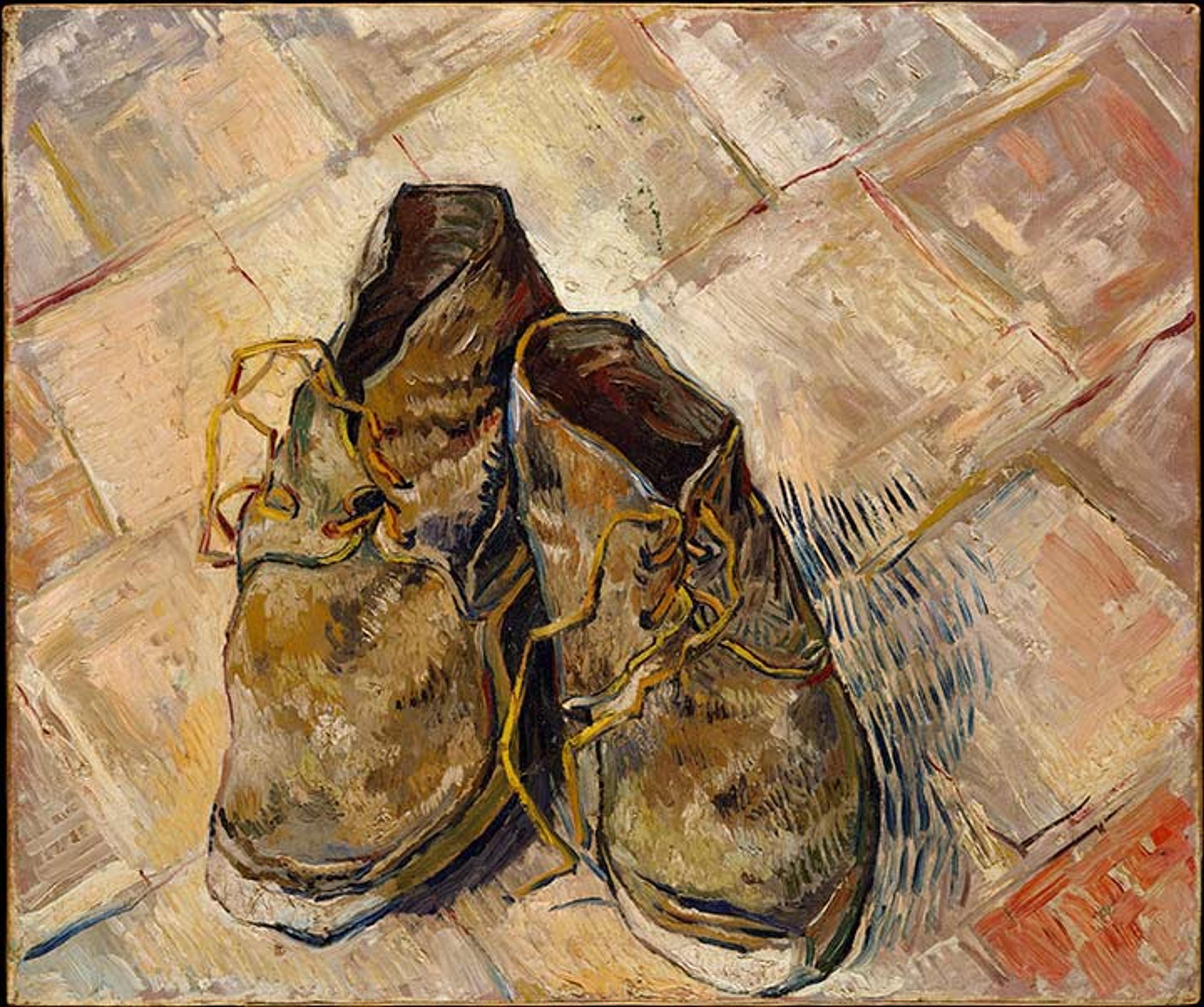
Michelangelo Buonarroti (Italian, 1475–1564). Studies for the Libyan sibyl (recto); studies for the Libyan sibyl and a small sketch for a seated figure (verso), ca. 1510–11. Red chalk, with small accents of white chalk on the left shoulder of the figure in the main study (recto); soft black chalk, or less probably charcoal (verso); sheet: 11 3/8 x 8 7/16 in. (28.9 x 21.4 cm). The Metropolitan Museum of Art, New York, Purchase, Joseph Pulitzer Bequest, 1924 (24.197.2)
«Are you a left-handed artist? Then raise your hands! Your left hands, that is. Did you know that August 13 is designated International Left-Handers Day? It was originally observed to promote awareness of the inconveniences faced by left-handers, who make up from seven to ten percent of the world's population, in a predominantly right-handed world. Today, it celebrates their uniqueness and differences. »
Left-handed artists are certainly represented at The Met. These are just a few lefties whose work can be found in the Museum's collection: Leonardo da Vinci (reportedly ambidextrous), Paul Klee, Michelangelo Buonarroti, Henri de Toulouse-Lautrec, Peter Paul Rubens, Hans Holbein The Younger, and Vincent van Gogh.

Leonardo da Vinci (Italian, 1452–1519). The Head of the Virgin in Three-Quarter View Facing Right, 1510–1513. Black chalk, charcoal, and red chalk, with some traces of white chalk (?); some remains of framing outline in pen and brown ink at upper right (not by Leonardo); Sheet: 8 x 6 1/8 in. (20.3 x 15.6 cm). The Metropolitan Museum of Art, New York, Harris Brisbane Dick Fund, 1951 (51.90)
Throughout history, many left-handed people have needed to adapt to use right-handed tools and objects. No matter how you prefer to hold your pencil, take this challenge: select an object that you'd like to draw and set a timer for two minutes. First, sketch the object with your dominant hand. Then, reset the timer and sketch the same object again using the other hand. Are your results similar? Think about whether your concentration or focus changed when you switched. Did it feel different to draw with your other hand? Let us know!

Vincent van Gogh (Dutch, 1853–1890). Shoes, 1888. Oil on canvas; 18 x 21 3/4 in. (45.7 x 55.2 cm). The Metropolitan Museum of Art, New York, Purchase, The Annenberg Foundation Gift, 1992 (1992.374)